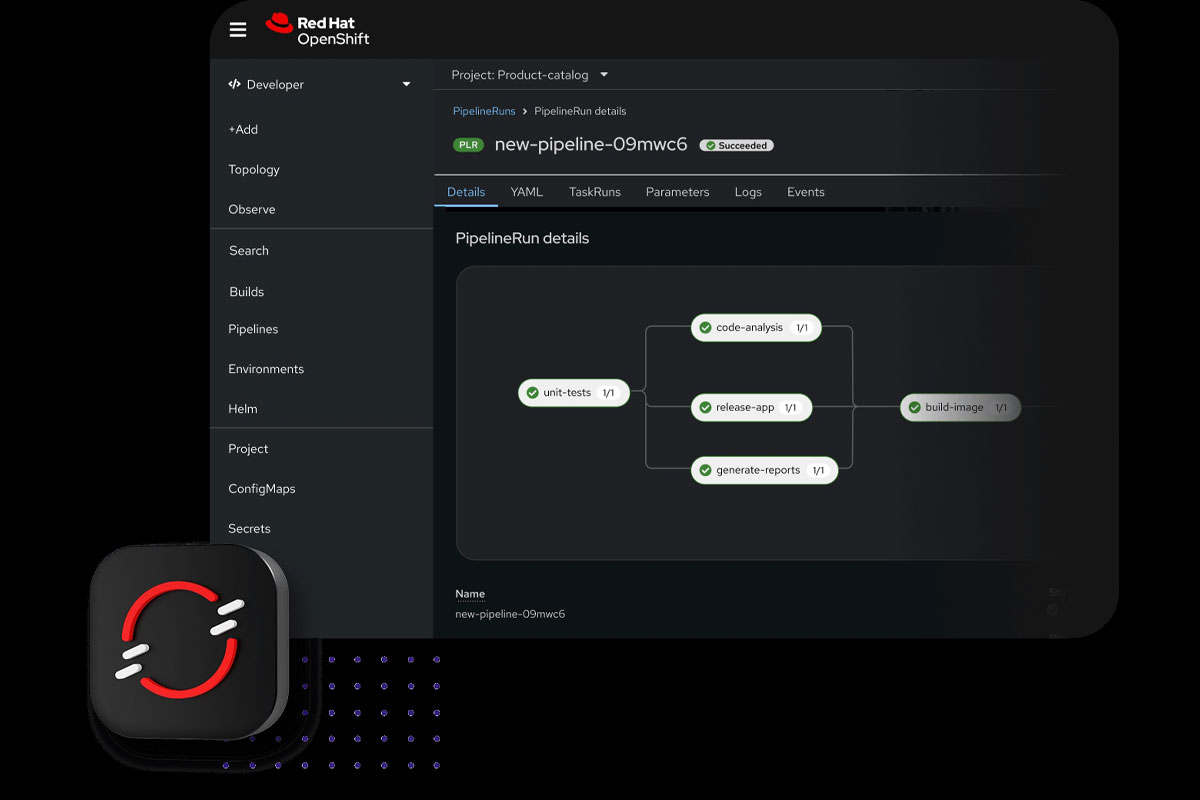Red Hat OpenShift 4.20 Enhances Security of the Modern Application Platform to Unite Enterprise IT, from Virtual Machines to AI
Red Hat OpenShift enables customers to run what they need, where they need it, with new capabilities extending the platform’s trusted foundation to accelerate AI workloads and expand virtualization support across sovereign clouds.
Red Hat, the world’s leading provider of open source solutions, today announced the general availability of Red Hat OpenShift 4.20, the latest version of the industry’s leading hybrid cloud application platform powered by Kubernetes. Red Hat OpenShift 4.20 introduces capabilities for accelerating AI workloads, strengthening core platform security and enhancing virtualization strategies consistently from the datacenter, to public clouds, and the edge.
As organizations navigate increasing complexity and expanding regulatory requirements, they need a more consistent and reliable platform to bridge diverse applications and services across their entire IT footprint. There is also a growing need for capabilities that support digital sovereignty, which requires organizations to maintain expansive control over their cloud destiny – deciding precisely which applications and data must run in-house and which exist outside that domain. Red Hat OpenShift 4.20 provides a unified and more efficient foundation, built with systems security front and center, enabling sovereign deployments and accelerating the development and deployment of applications and AI workloads across hybrid cloud environments.
Strengthened platform security and enhanced core manageability
This latest release significantly strengthens the platform’s security posture, addressing both today’s immediate threats and the complex, evolving security needs of enterprise IT. By hardening the platform for the unique requirements of sovereignty, Red Hat OpenShift 4.20 helps secure the main traffic between control plane components with initial support for post-quantum cryptography (PQC) algorithms for mTLS, to deliver long-term cryptographic protection for critical communications.
This release also brings greater operational flexibility to the core platform and strengthens security capabilities for Red Hat OpenShift Platform Plus customers. This includes the general availability of Red Hat Advanced Cluster Security 4.9 and enhancements to Red Hat Trusted Artifact Signer and Red Hat Trusted Profile Analyzer to help customers more easily manage and analyze security data. Additionally, the zero trust workload identity manager is scheduled for release later this year, delivering identity attestation for machines and humans alike across federated infrastructure.
Additional features focused on control and identity include:
- Gain identity management flexibility and control: Bring-your-own OpenID Connect enables customers to use their existing OpenID Connect (OIDC) infrastructure, providing greater control over user data.
- Significantly lower cost pod-to-pod mTLS encryption, identity-based traffic policies, observability and more with “sidecar-less” ambient mode with Red Hat OpenShift Service Mesh, helping reduce infrastructure costs, operational complexity, and resource overhead.
- Simplify external secret management with a cluster-wide service: The External Secrets Operator (ESO) provides lifecycle management for secrets fetched from external secret management systems, helping improve security.
- Reduce infrastructure costs with high availability on smaller footprints: Two-node OpenShift with arbiter enables a new high-availability form factor, reducing infrastructure costs without sacrificing resiliency.
- Enhance network integration and performance for on-premises deployments: Border Gateway Protocol (BGP) in OVN-Kubernetes delivers new networking capabilities to on-premises environments by providing continuous route exchange between OpenShift and external network fabrics, which means faster adaptation to network changes, VM migration or failover events.
Scaling AI from experimentation to production
Red Hat OpenShift 4.20 helps accelerate AI projects to run in production faster, more reliably, and with more confidence. New capabilities are designed to streamline the deployment and management of complex AI workloads, making them easier to scale and manage. For instance, the LeaderWorkerSet (LWS) API for AI workloads simplifies the management of large, distributed AI workloads with automated orchestration and scaling.
Deployment time is dramatically reduced using Image volume source for AI workloads, which allows new models to be integrated in minutes without rebuilding application containers. Together, these features provide functionality for Red Hat OpenShift AI or other AI platforms to help customers move more easily from experimentation to production. Additionally, Model Context Protocol (MCP) enables cluster management via developer tools like Visual Studio Code.
Production-ready virtualization
Red Hat continues to optimize Red Hat OpenShift Virtualization, enabling customers to manage virtual machines (VMs) alongside containers and cloud-native applications from a single platform. The addition of CPU load-aware rebalancing and Arm support improves performance and resource utilization for virtualized workloads, while expanded hybrid cloud support extends Red Hat OpenShift Virtualization to bare-metal deployments on Oracle Cloud, giving organizations more control over their infrastructure and the placement of their data. With enhanced storage offloading functionality, the migration toolkit for virtualization significantly accelerates VM migration from legacy virtualization solutions to OpenShift Virtualization through existing storage resources.
Availability
Red Hat OpenShift 4.20 is now generally available. More information, including how to upgrade to the latest version, is available here.
Supporting Quotes
Mike Barrett, vice president and general manager, Hybrid Cloud Platforms, Red Hat
“The pace of innovation in enterprise IT is accelerating, driven by the demands of AI and a shifting landscape caused by new regulations and corporations needing to mix sovereignty into their technology investments. With Red Hat OpenShift 4.20, we are delivering a foundation that not only keeps pace with these changes but helps our customers lead them. We’re providing the tools to unify their infrastructure, from legacy virtual machines to modern approaches for virtualization, all while maintaining the enhanced security posture, confidence and production control that is essential for market changes coming in 2026.”
Luc Choubert, vice president, Platform Engineering, Amadeus
“Our journey to multi cloud was driven by the need for massive scale and speed, moving from our private datacenter and supporting our 10,000 engineers. Red Hat OpenShift has become the unified foundation for this transformation, allowing us to securely automate our real-time key applications from infrastructure to deployment. Enhancing OpenShift with OpenShift Lightspeed could boost our teams’ efficiency and ability to scale by harnessing generative AI to provide instant, context-aware answers to admins of all experience levels. We are particularly interested in the continuous focus on platform innovation in this latest release, which is essential for giving us the long-term agility and resilience needed to serve the global travel industry.”
Gustavo de Abreu Fiuza, DevOps engineer, Cloud Platforms, Banco do Brasil
“When Banco Brazil first embraced Kubernetes, we found that scaling it to meet the demands of Latin America’s largest bank required significant operational overhead. Moving from vanilla Kubernetes to Red Hat OpenShift immediately reduced that overhead while expanding our hybrid cloud strategy. As a result, we have tripled our number of managed applications without increasing headcount. We’ve fully embraced GitOps and we even offer optimization services to our developers to keep per-application costs down. The platform also enabled us to more easily include the public cloud via Microsoft Azure Red Hat OpenShift.”
Jim Mercer, program vice president, Software Development, DevOps, and DevSecOps, IDC
“The true challenge for enterprises today is no longer just adopting AI, but securely bridging the AI lifecycle with their existing hybrid cloud infrastructure. Platforms like Red Hat OpenShift provide the necessary layer of consistency and control to manage applications, data and security policies across diverse footprints, ensuring businesses can meet new digital sovereignty demands while accelerating innovation.”
Venkat Ramakrishnan, vice president and general manager, Portworx by Pure Storage
“By optimizing Portworx data management on Red Hat OpenShift, we deliver a powerful application development solution for greater reliability and operational efficiency from the datacenter to the cloud and out to the edge. Our support for Red Hat OpenShift 4.20 and the enablement of two-node OpenShift with arbiter on Portworx extends critical data resilience, management capabilities and services across multiple edge locations, helping customers realize the future of edge infrastructure.”





